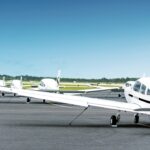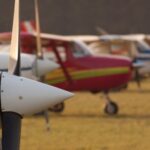NASA’s SpaceX Crew-7 completed the agency’s seventh commercial crew rotation mission to the International Space Station on Tuesday after splashing down safely in a Dragon spacecraft off the coast of Pensacola, Florida. The international crew of four spent 199 days in orbit.
NASA astronaut Jasmin Moghbeli, ESA (European Space Agency) astronaut Andreas Mogensen, JAXA (Japan Aerospace Exploration Agency) astronaut Satoshi Furukawa, and Roscosmos cosmonaut Konstantin Borisov, returned to Earth splashing down at 5:47 a.m. EDT. Teams aboard SpaceX recovery vessels retrieved the spacecraft and its crew. After returning to shore, the crew will fly to NASA’s Johnson Space Center in Houston.
The Crew-7 mission lifted off at 3:27 a.m. Aug. 26, 2023, on a Falcon 9 rocket from NASA’s Kennedy Space Center in Florida. About 30 hours later, Dragon docked to the Harmony module’s space-facing port. Crew-7 undocked at 11:20 a.m. Monday, March 11, to begin the trip home.
Moghbeli, Mogensen, Furukawa, and Borisov traveled 84,434,094 miles during their mission, spent 197 days aboard the space station, and completed 3,184 orbits around Earth. The Crew-7 mission was the first spaceflight for Moghbeli and Borisov. Mogensen has logged 209 days in space over his two flights, and Furukawa has logged 366 days in space over his two flights.
This was the third flight of the Dragon spacecraft, named Endurance. It also previously supported the Crew-3 and Crew-5 missions. The spacecraft will return to Florida for inspection and processing at SpaceX’s refurbishing facility at Cape Canaveral Space Force Station, where teams will inspect the Dragon, analyze data on its performance, and process it for its next flight.
The Crew-7 flight is part of NASA’s Commercial Crew Program and its return to Earth follows on the heels of NASA’s SpaceX Crew-8 launch, which docked to the station March 5, beginning another science expedition.
The goal of NASA’s Commercial Crew Program is safe, reliable, and cost-effective transportation to and from the International Space Station and low Earth orbit. This already is providing additional research time and has increased the opportunity for discovery aboard humanity’s microgravity testbed for exploration, including helping NASA prepare for human exploration of the Moon and Mars.
Subscribe to the FINN weekly newsletter

